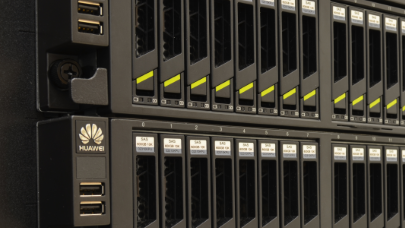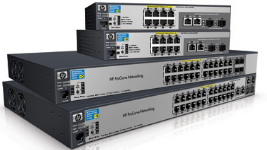Following the announcement of its new 3PAR StoreServ 20800 full Flash storage arrays at the HP Discover conference, HP recently detailed its strategy for storage. The goal is to help companies accelerate their digital transformation.
The new 3PAR StoreServ 20800 product range is available in two versions, hybrid (3PAR StoreServ 20800) and full flash (3PAR StoreServ 20850). It is obviously the latter is emphasized, with an extremely low announced cost: 1.5 dollar per gigabyte. The advantages put forward on the hp StoreServ are its affordability, hyper scalability, high performance and high resistance.
According to HP, a successful digital transformation for an enterprise depends on making the right choices for storage. In order to deploy an IT infrastructure on demand, to secure the digital assets of the company and as a way to improve productivity and helping the company to turn data into value-added information.
The obstacles that slow adoption of modern storage systems
Among the obstacles that have slowed the adoption of full flash storage arrays, are questions of a technical nature. Should it be a block-, file- or object-oriented file management system? Should there be converged or hyperconverged infrastructure elements? Should storage resources need to remain on premise within the company? Or be put in the cloud, or adopt a hybrid approach? Should storage remain traditional, hybrid or full flash? With what benefit and for which application context? Finally, should the new storage infrastructure be software defined, or Open Source? As we see, this cascade of choices is what determines the adoption of a strategic storage system for any company wishing to make its storage infrastructure evolve.
A scheme to guide the company’s storage strategy
To guide companies to opt for the strategy that best suits its business and thereby its needs, HP recommends to choose the infrastructure according to four criteria arranged in two axes. On the X axis is on one end the SLA criterium for highly critical missions, and on the other the cost if economic considerations are the strongest. To complement this decision tree, the Y axis has on each end the two market approaches: complete solutions or hardware components.
A guided comprehensive solution by successive choices
HP offers for its part two broad guidelines, the first for a software defined approach with StoreVirtual and the second for a system defined approach with its 3PAR offer. The second step is to complete this first brick with a converged (CS700 range) or a hyperconverged server (CS HC-200) to build up a solution for an optimal deployment. All are bound by the StoreOnce Data Services. Finally, HP recommends the deployment of common and standardized management interfaces like OneView integrating OpenStack. The alignment of all of these elements, according to Thierry Auzelle, hp France’s storage is to allow “a real-world TCO calculation”, lack of which explains why the investment decision has been delayed for so long.
An aggressive offer
Last year, the previous generation of 3PAR arrays reached more than 900,000 IOPS with a latency of 0.3 msec, for a cost of 2 dollars per Giga-byte using 1.92 TB SSDs. HP emphasizes its leading market position in the field of express indexing, with a capacity of 1.4 Peta-bytes of usable capacity. New this year is the upcoming availability of SSD 3.84 TB boasting a capacity boosted by 20% using Adaptive Sparing, a patented algorithm with a guaranteed thin provisioning mechanism and a 50% inline deduplication algorithm (done by a proprietary ASIC). The result is a multiplication of the density by 8, a 73% reduction of the price and an IOPS performance multiplied by 4. 3PAR Storeserv 20850 reaches 3.2 million IOPS with a latency of 0.2 to 0,8ms. Capacity on a rack is 5.5 Peta-bytes (280TB by 2U chassis) and can reach 12 Peta-bytes. Streamed asynchronous replication capabilities for long distances with up to one second allowed between the target and origin. A data control scheme named persist checksum ensures the integrity of transactions from one end to another.
© HPC Today 2024 - All rights reserved.
Thank you for reading HPC Today.

































